After mid-1942 and throughout most of 1943, relative calm reigned over the Central Pacific while U.S. forces fought their way through the bloody campaigns of Papua, Guadalcanal, and New Guinea in the Southwest Pacific. By the fall of 1943, the United States began to gain strength in the Pacific. The Battle of Midway in June 1942 had stopped the Japanese eastward push in the central Pacific and was the last great Pacific naval battle for about two years. During this period the Imperial Japanese Navy and Japanese merchant vessels roamed freely through the Central Pacific soon, subject only to periodic attacks by Pacific Fleet submarines, which were taking an ever-increasing toll of enemy ships. The Japanese garrisons scattered throughout Micronesia built airstrips and prepared their defenses for the day when the Americans would resume their offensive. Even as the Japanese were consolidating their gains in the Central Pacific, however, American planners were at work both at Pearl Harbor and in Washington preparing for an offensive that would take advantage of the changes brought by the Battle of Midway. At the May 1943 Trident Conference, British and American leaders approved a strategic plan for an offensive drive toward Japan through the Central Pacific. The United States used that time period to use it greater industrial strength to build up increased numbers of ships, planes, and trained aircrews. And it was time to start using these new resources.

Admiral King, the Chief of Naval Operations (CNO) during World War II, had never intended that the main drive across the Pacific would be from the MacArthur’s Southwest Pacific route. With Admiral Nimitz concurring, but General MacArthur strongly dissenting, he activated a variant of War Plan Orange, a drive to the Philippines by way of the Marshalls, the Marianas, and the Palaus, by-passing the supposed bastion of Truk and neutralizing other Japanese bases with carrier raids. Then a landing somewhere in the Philippines would free the Filipinos and cut Japan’s oil supply between the oil fields southward to Japan proper. Logically, oil lost and the Allied oil embargo reestablished, Japan should sue for peace. At least that was the hope.
Although the plan clearly stipulated that the main effort in the American westward drive would be through the Central Pacific, not everyone agreed that this was the best course of action. MacArthur especially had grave doubts about the wisdom of giving the Central Pacific priority over his planned drive to isolate Rabaul in the Southwest Pacific. The planners in Washington spent the months of June and July 1943 trying to reconcile the various points of view. At first they proposed an invasion of the Marshall Islands in October using battle-tested Marine divisions, but MacArthur pointed out that the only experienced amphibious assault troops available were those in the Southwest Pacific Area. Using them would delay the beginning of Operation CARTWHEEL, the campaign against Rabaul. The Combined Chiefs of Staff and the Joint Chiefs of Staff agreed with MacArthur that CARTWHEEL should not be delayed, but at the same time they wanted to launch a drive through the Central Pacific soon. A compromise was finally reached. Admiral Nimitz would begin a ground offensive in the Central Pacific, but it would be limited initially to a two-division invasion of the Gilbert Islands to develop airfields and facilities in support of a later operation in the Marshalls. On 20 July 1943, the Joint Chiefs of Staff directed Nimitz to seize bases on the Gilbert Islands and on the island of Naura, west of the Gilberts.
Mahu Learn
In 1943, the US had its eyes on the Gilbert and Marshall Islands (Tarawa, Makin, Kwajalein, Eniwetok, and Majuro islands) as locations from which they could establish air and naval bases to support upcoming operations in the Central Pacific, specifically Saipan, Tinian, and Guam. By the summer of 1943, the US had five carriers assigned to the Pacific: ENTERPRISE, SARATOGA, INDEPENDENCE, ESSEX, and the new YORKTOWN. Admiral Nimitz, as Commander in Chief, Pacific Ocean Areas, directed the use of carrier Task Forces to take the battle to the Japanese. Centered around one or more carriers, they began training to turn this concept into reality.
Nimitz chose to do this by “Mahu Learn” raids – attacks to cause commanders, ships, and crews to relearn the art of carrier attack by the “go, do, see” method. Marcus Island was selected to be the site of the first “Mahu Learn” lesson.
Marcus Island, only 900 miles from the Japanese mainland, was a key patrol, aircraft staging and anti-submarine base for the Japanese in the central Pacific. Japanese patrol aircraft, along with picket boats, would make routine patrols on Japan’s eastern flank in search of American submarines and other combat ships. Marcus sat on the route American submarines would take from Midway island on their journey to attack Japanese shipping around Japan and China. Thus Japanese anti-submarine aircraft would patrol the seas around Marcus, hoping to catch an American sub off guard as it steamed on diesel power on the surface to its assigned area. Marcus was also used as a refueling stop for aircraft on their way to Truk and other Japanese bases to the south and east.
Marcus Island was first attacked by the US on 4 March 1942 when Admiral Halsey used the USS Enterprise’s aircraft to bomb and strafe the island. The attack followed the attack on Wake Island and was hastily planned to utilize the aircraft of only the USS ENTERPRISE. While small in scope, it was an excellent target to train new crews as the island was isolated and not normally protected by Japanese fighter aircraft. (It did gain a reputation later in the war for its very accurate anti aircraft fire.)
The second attack on Marcus Island was to consist of aircraft from three US Navy carriers and was scheduled to be conducted on 1 September, 1943 Marcus Island local time. The three carriers involved in this attack were to be the USS Essex (CV 9), the USS Yorktown (CV 10), and the USS Independence (CVL22). This was a change in naval air doctrine as previously, each fleet carrier would operate independently. Admiral Nimitz grouped the three carriers into a single Task Force 15 and directed them to operate as in integral unit. He chose Rear Admiral Charles A. “Baldy”Pownall to be the first commander of this new fighting unit.
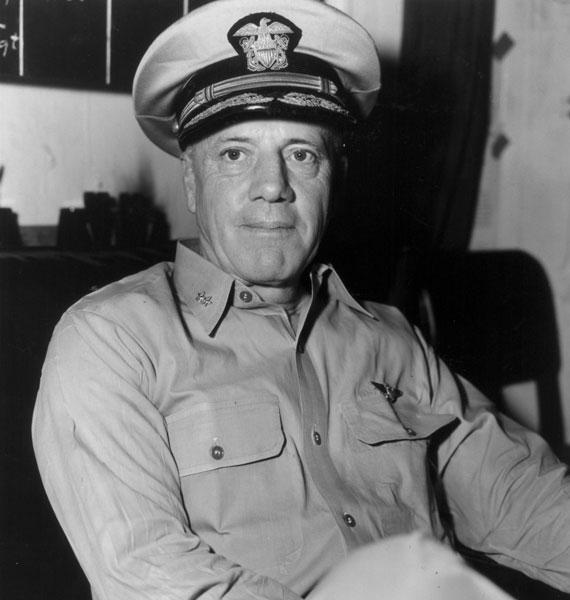
:max_bytes(150000):strip_icc():format(webp)/Commissioning_of_USS_Yorktown_CV-10_on_15_April_1943-74a88019162d4af48ce905bece2adca8.jpg)
24 July 1943: The USS YORKTOWN arrives at Pearl Harbor after departing the Chesapeake Bay on the east coast of the United States and transiting the Panama Canal before arriving at Pearl Harbor on July 24, 1943. Remaining in Hawaiian waters for the next four weeks, the carrier continued training before joining Task Force 15 off the coast of Hawaii for the raid on Marcus Island.
————————————————————————————————————————————
The USN begins Submarine “LIFEGUARD” missions to rescue downed fliers
Early August 1943: In August of 1943, Rear Admiral Charles Lockwood, commander of submarine forces in the Pacific, received a call from Rear Admiral Charles A. Pownall. As the commander of the three carrier Task Force 15, Admiral Pownall was concerned about the lack of dedicated air-sea rescue resources during carrier attacks on isolated targets. The task force was to later in the month attack the isolated islands of Marcus and Wake Island. These islands were selected to give new pilots some experience in combat but one shortcoming noted in the attacks conducted so far was the lack of a dedicated air-sea rescue. To remedy this, it was requested of Lockwood to make available a submarine on the surface near these targets to assist in air crew rescue. The submarine would be in a location known to the pilots before they took off and thus give them an “island” to fly to if they encountered problems. Thus began the new Lifeguard missions for US submarines. There were problems to work out. A sub is most vulnerable when it is on the surface as it would be an easy target for enemy aircraft or submarines. Plus, it would take the valuable resource away from its primary mission of sinking enemy shipping. However, Lockwood finally agreed to the concept and directed that a submarine, the USS SNOOK, be diverted to perform this mission.
————————————————————————————————————————————
18 August 1943: The submarine USS Snook leaves Pearl Harbor in Hawaii, underway to Midway Island to begin its third war patrol.

GATO CLASS SUBMARINE
The GATO class submarine was the main fleet submarine of the United States Navy during WW 2. With a crew of 6 officers and 54 enlisted men, she had a range of 11,000 miles surfaced at a 10 knot cruise speed. Driven by four diesel engines while on the surface, and four battery powered electric motors while submerged, she could stay out on patrol for up to 75 days.
311 feet long, 27 feet wide, a GATO class submarine could stay submerged for 48 hours while cruising at 2 knots. A total of 77 were built.
22 August 1943: Task Force 15, RADM Charles Alan Pownall commanding, departs Pearl Harbor for Marcus Island. Task Force 15 was made up of:
Task Group 15.5: The carriers USS Essex (CV 9), USS Yorktown (CV 10), and USS Independencec(CV-6)
Task Group 15.4: The battleship USS INDIANA and cruisers USS NASHVILLE and USS MOBILE
Task Force 15.1: Destroyers USS STEVENS, HARRISON, JOHN RODGERS, McKEE, LaVALLETTE, THATCHER, RINGOLD, SCHROEDER*, SIGSBEE, and DASHIELL.
Task Force 15.6 Destroyers USS GADUALOUPE and HALFORD*
- USS SCHROEDER and USS GAUDALOUPE interchanged task group assignments during the period 29 Aug 43 to 4 Sep 43.
The submarine USS SNOOK arrived at Midway Island on 22 August 1943 to refuel prior to leaving for its assigned combat patrol in the east China Sea off the coast of China. However, Admiral Lockwood had chosen it to be the first Lifeguard submarine for the Task Force 15 attack on Marcus Island. New orders were received from Hawaii directing it to proceed to Marcus Island and reconnoiter prior to the 1 September 1943 carrier strike, and to stand by following the strike for its new mission – a Lifeguard for downed aircrews.
23 August 1943: Task Force Fifteen rendezvoused north of Hawaii on the morning of August 23, 1943. Three carriers, the Yorktown, Essex, and Independence, formed the nucleus of the task force, referred to as Task Force 15.5 under the command of Rear Admiral Charles A. Pownall. Accompanying the carriers were the cruisers CL-43 USS Nashville and CL-63 USS Mobile, and the battleship BB-58 USS Indiana. Task Group 15.1 was under the command of Captain Herman A. Spanagel. Ten destroyers, under Captain Thompson, were included in the Task Force.

30 August 1943: The Gato class submarine USS SNOOK arrives off the northern coast of Marcus Island. In her Report of War Patrol No. 3, she noted the following:
0430 K Submerged and an hour later sighted radio towers on MARCUS. Spent the day slowly circumnavigating the island. Took a complete set of pictures. One small 100 ton boat was the only ship present. Two NELLIES were seen to land during the day. There was undoubtedly more patrol activity not observed. The periscope had to be used cautiously due to a glassy sea and our proximity to the island.
STRATEGIC IMPORTANCE OF MARCUS ISLAND TO THE JAPANESE
Marcus Island was Japan’s only outpost guarding the approaches to central Japan. It was used as a base from which to send anti-submarine patrols aloft to search for American subs cruising by Marcus on their way to their hunting grounds off the coasts of Japan and China. It was also used by the Japanese as a refueling stop for its planes arriving from the mainland before they proceeded to Truk and other islands further south.
One such example was on 5 February 1944. The submarine USS JACK was on the surface passing Marcus Island on course to their war time patrol area in the South China Sea. Their primitive air search SJ radar detected a contact four miles from their boat. Although their lookouts did not see anything, the skipper chose to believe the radar and dived. As they were passing the 60 foot depth, a large explosion was heard, then two more. Whatever the radar had seen, it was now dropping bombs on them. They later resurfaced and continued their trip to their patrol area but were forced to dive four more times that day to avoid search aircraft from Marcus Island. (Silent Running, James F. Calvert; John C. Wiley & Sons, Inc, 1995)

31 August 1943: After an uneventful journey the carrier task force arrived at a point 130 miles north of Marcus Island during the night of 31 August 1943. The aircraft carriers and battleship/cruisers were arranged in a circular pattern around the guide ship, the USS YORKTOWN. The destroyers were mostly out in front of the formation.

The submarine USS SNOOK spent the day of 31 August 1943 patrolling submerged around the island.
1 September 1943:

0422: About 3 hours and twenty minutes before sunrise, the USS YORKTOWN launched the first attack group into the darkness. Led by their Air Group Five Commander, Commander James H. Flatley, eighteen new F6Fs took off first. To provide a visual horizon for the aircraft, the destroyer screen ahead of them, and the three carriers, turned their “truck” lights on.

USS SNOOK Report of War Patrol entry: 0424 K Submerged 10 miles north of MARCUS while still dark.
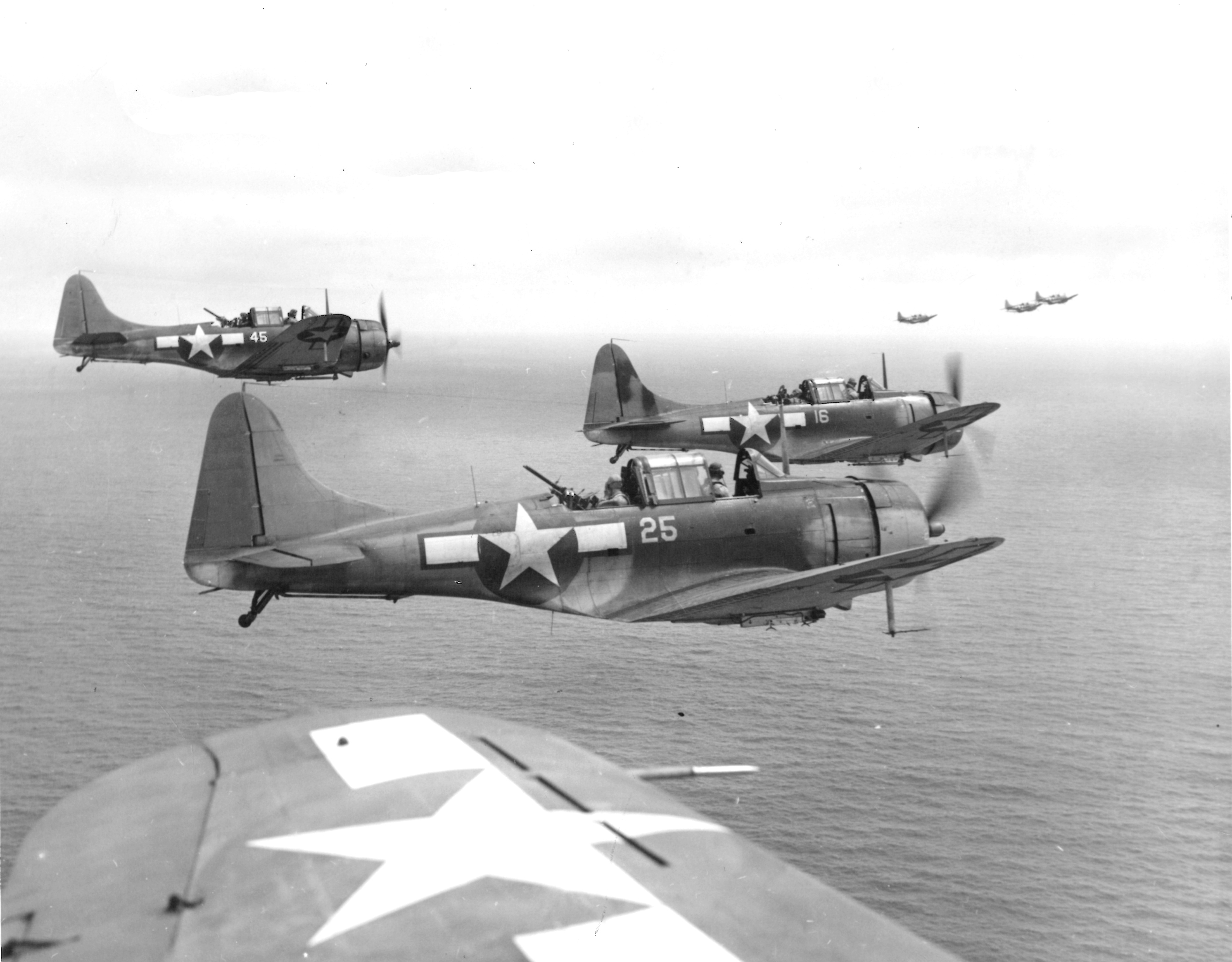
Next, 11 SBD Dauntless dive bombers took off. They were armed with 1000 pound bombs.
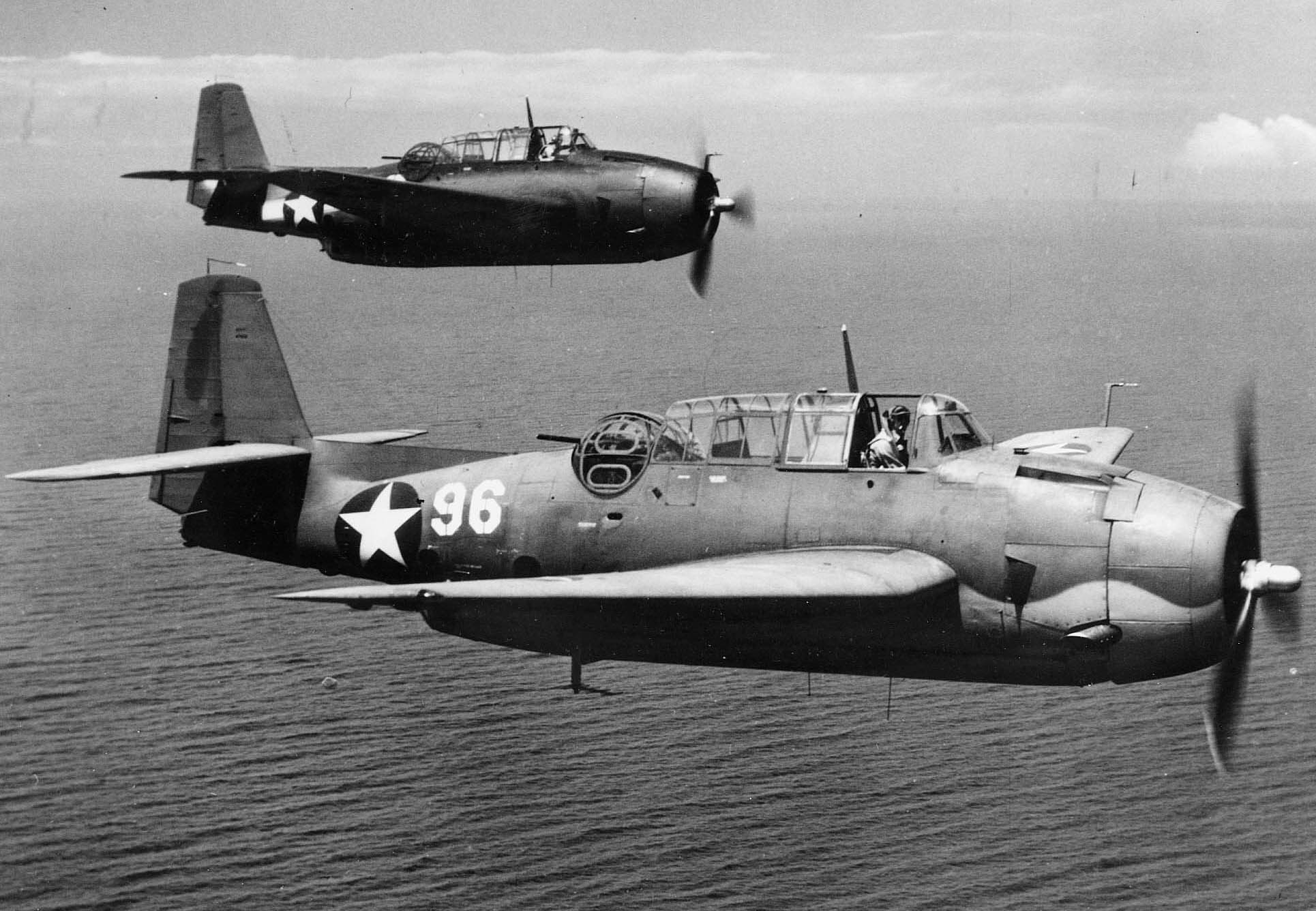
The 18 TBFs of Bombing Squadron 5 were then launched from the USS YORKTOWN. The TBFs were armed with either 2000 pound daisy cutters or six 500 pound incendiary bombs. The attack group maintained a steady climb after departure from the ship, levelling off at 8,000 feet. It was a clear, dark, moonless night, with a surface haze covering the horizon. Winds were less than eight knots.
Marcus Island was about to undergo a relentless day long air attack. Planes from the three carriers were to launch a total of nine strike groups against the Japanese installations on the island throughout the day.
The planes were launched about 130 miles north of Marcus Island. Visibility and ceiling were unlimited, seas calm with light south easterly winds. Once the aircraft had joined up, they began their southeasterly heading toward Marcus Island in the dark, slowly climbing to 8,000 feet.
0520: The USS ESSEX began to launch her aircraft, with the F6F Hellcats of VF-9 being first off, followed by 18 TBF Avengers of of VT-9. Next off were the SBD Dauntless bombers from VB-9. Turret Gunner Walter J. Deptula, onboard one of the USS ESSEXs TBFs from VT-9, described the launch as follows: “All the planes were milling around in the early morning darkness trying to find their own squadrons. This was not only scary, but downright dangerous”. Everything was done visually, there was no radar to provide separation for the aircraft. All planes turned on their running lights and formation lights after taking off until the squadrons were joined. At that time, they dimmed their lights until the attack commenced. As each aircraft attacked, their lights were turned off.

0603: The island was first picked up at a distance of 18 miles by the radar of the TBF Avengers, which was used to direct the group to the island until visual contact was established. A bright light was observed near the center of the island. Approximately 42 minutes before sunrise, the first six plane division of TBF Avengers under Lt Commander Upson, flying at 8000′, reported visually sighting the island. A bright light was observed near the center of the island. Scattered clouds covered the island, tops varying between 2000′ to 7,000′.

Lt Cmdr Upson, in his TBF Avenger, made the first glide bomb run, dropping his incendiaries and two 500 pound bombs on the north side of the East/West runway. Buildings in the area immediately caught on fire. Anti aircraft fire from the battery on the south-east corner of the island began firing at the attackers.
The F6F Hellcats had been holding at altitude just off the island and noted the anti-aircraft fire that began shooting at the TBFs. As soon as the six TBFs of the first element pulled off of their targets, the F6Fs began strafing the AA sites. As it was still fairly dark, they used the flashes of the guns as their target. AA fire from the west and north points opened up shortly afterwards.
The Japanese on Marcus Island had at least six 3″ antiaircraft guns and at least 10 20 mm antiaircraft guns. And a multitude of small machine guns and rifles. While this was the first time the defenses of Marcus Island were put to a test, they would later gain the reputation as one of the most accurate and dangerous gunners in the war.


Soon, batteries were firing from all three points of the island, and small caliber machine gun fire came from the interior of the island. The other aircraft dropped their 2,000 pound bombs and started several fires on the island.
Once the anti-aircraft fire began, the F6F fighters of Fighter Squadron 5 began their strafing runs on them, using the gun’s flashes as aiming points. Anti aircraft fire from the southwest and north corner of the island soon started firing. The firing was particularly heavy from the south eastern and north corners of the island.
The second division of the Torpedo squadron Five’s TBFs had swung around to the south of the island and approached it using airborne radar from the southeast. Through a break in the clouds, they saw the fires burning from the first strike and immediately began their attacks. Their leader, Lt Commander Reseandorfer, hit a large oil tank on the east side of the north/south running runway, which exploded. Four 2000 pound bombs hit along the corners of the East/West runway, cratering it in several places.
Next, the third division of TBFs from Torpedo Squadron Five attacked, led by Lt Condit. By this time, the clouds extended down to around 2,000 feet, necessitating a glide approach through the clouds. Lt Condit was the first of this group to attack. He turned off his light and entered his dive at 4,000 feet and disappeared into a cloud. He and his crew were never seen again. It is believed that he did drop his incendiaries and 500 pound bombs as fires were seen in the vicinity. But his crew and aircraft was never seen again. The remaining planes dropped their 2,000 pound bombs on buildings and the East/West runway.
Immediately following the attack of the TBF Avengers, the SBD Dauntless of VB Squadron Five commenced attack from the northwest. They dropped their their 1000 pound bombs hit several built up installations on the island. AA fire was encountered from all sides of the island , with the heaviest fire being received from the north and south east points.
Launch of the second attack group from the USS YORKTOWN
0640: The second attack group from the USS YORKTOWN was launched. It consisted of 12 F6F fighters and 12 SBD Dauntless bombers. The SBDs were loaded with 1,000 pound bombs. They climbed to altitude and proceeded on a 210 degree heading toward Marcus Island, now 117 miles to the south.
Back on Marcus Island, the first group of attackers from the USS YORKTOWN were finishing their bomb runs and were heading back to the ship. This released the F6F Hellcats from their CAP duties and they attacked the island by strafing. As the sun was coming up, they could now see there were seven Mitsubishi “Betty” bombers lined along the north edge of the East/West runway. And what was probably their crews were seen running toward the aircraft. The F6Fs immediately began strafing runs with 50 caliber guns on the parked Japanese planes and their crews. After 16 strafing runs, the seven Bettys were all burning and their crews lay dead on the tarmac. The F6Fs then proceeded to strafe the pier located on the south side of the island and then installations on the north side. A total of 56 strafing runs were made, to include 16 made against the anti-aircraft guns.
the loss of ensign morgan
the loss of ensign morganIt was in these strafing attacks on the north side of the island that one F6F, flown by Ensign Morgan, was hit. Not much is known about his fate, but he probably pulled off the target and turned north toward his ship, the USS YORKTOWN. In his last radio transmission he stated “his oil press was low”. Nothing more was heard or seen of him as he did not return to the ship. About two hours later, the Air Group Commander of the USS ESSEX strike force, Commander Raby, sighted a man in the water about ten miles north of Marcus Island. He was swimming in the middle of water colored with a green marker dye. It is thought that this was Ensign Morgan. However, he was never found.
————————————————————————————————————————————
0644: Sunrise
0650: USS SNOOK Report of War Patrol entry: Sighted AA fire on MARCUS followed by bombs just as the first streak of light appeared on the eastern horizon. Surely most excellent navigating by the aviators. We closed the island slowly watching the show and listening to it on the RBI via the SD Radar antenna.
0740: Five SBD Dauntless dive bombers that failed to join up with the first USS YORKTOWN attack group arrived over the target. They found large oil fires burning on Marcus Island, with numerous other fires scattered around the island. The seven Betty bombers were still burning where they sat on the E/W runway. This group made made a dive bombing attack from the southwest and dropped their 1000 pound bombs. They noted that the three large radio towers on the east shore were still intact.
On their return to the ship, Lt (jg) Richard, a pilot of one of the SBDs, sighted a rubber boat with three occupants at 25 35N 154 32E. He circled the raft and noted his position, then returned to the USS YORKTOWN where he dropped a message notifying the ship of the sighting and position. It is believed that this raft held Lt Condit and his crew. Two separate search groups were launched later by the USS NASHVILLE and USS YORKTOWN failed to find any trace of these survivors.
0810: Four SBDs were launched from the USS YORKTOWN to perform Anti Submarine patrols.
0833: The last of the aircraft from the first raiding party landed onboard the USS YORKTOWN. The Air Group Commander, LtCmdr Flatley, with one wingman, remained near Marcus Island in order to direct subsequent attacks on the island. On the return flight of the USS YORKTOWN’s first attack group, a sighted what appeared to be a wooden picket boat 45 miles northeast of Marcus Island. Most of the returning aircraft made strafing runs on the boat, leaving the boat dead in the water and smoking.
Launch of the third attack group from the USS YORKTOWN
0930: The third attack group from the USS YORKTOWN was launched. It consisted of 12 F6F fighters, 7 SBDs, and 16 TBFs.
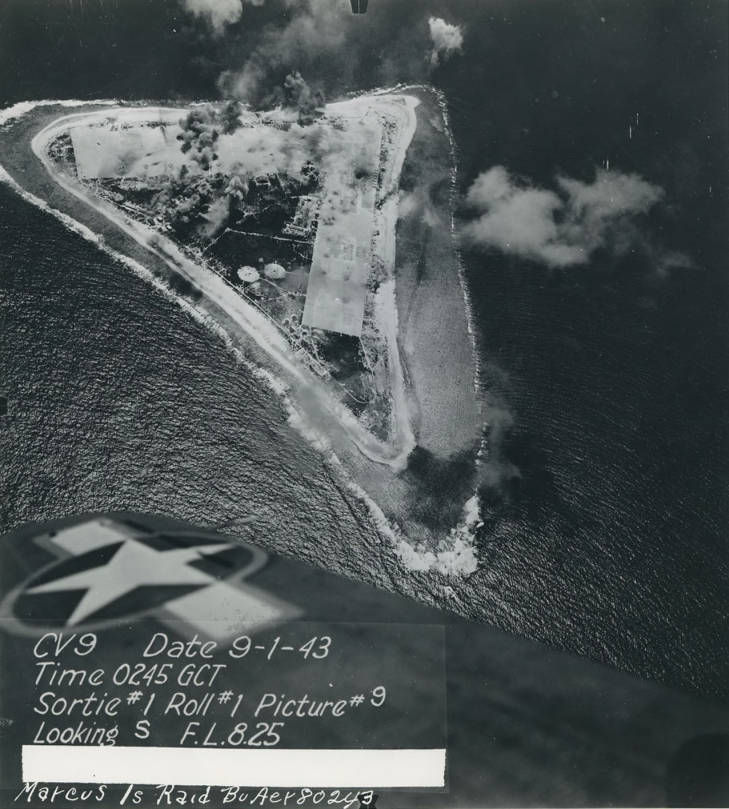
1100: The first attack group had been refueled and rearmed and took off for the fourth attack run from the USS YORKTOWN. It consisted of 13 F6F fighters, 12 SBD Dauntless bombers, and one TBF Avenger, and was again led by Lt Cmdr Flatley.
the shoot down of ensign towns in his f6f hellcat
Once the SBDs made their attacks, the lone TBH made his run with his 2000 pound bomb near the end of the East/West runway. During his glide bomb attack, a F6F fighter flown by Ensign Towns, passed them to make a strafing run to suppress the fire of the anti aircraft guns firing at them. The F6F was hit by the anti-aircraft fire and it was seen rolling over on its back and dove straight into the sea several hundred yards north of the island. The plane exploded on impact.
————————————————————————————————————————————
1239: Four F6Fs were launched from the USS YORKTOWN to perform Combat Air Patrol duties.
1300: Four SBD Dauntless’s were launched from the USS YORKTOWN to perform antisubmarine duties.
1312: The submarine USS SNOOK, now seven miles north of Marcus Island, intercepted a message that a friendly plane was down10 miles north of Marcus Island. They surfaced immediately and proceeded to the spot at flank speed. Two planes from one of the carriers aided in the search but nothing was sighted on the surface of the smooth water.
1350: Eight TBF Avengers were launched to search for the missing flyers. Four F6Fs fighters were also launched to perform Combat Air Patrol over them while they were searching.
1515: Seventeen F6F fighters from the USS YORKTOWN was launched as a Combat Air Patrol around the ships.
1525: The submarine USS SNOOK received a message that another plane was missing from formation and began a search for it north of the island.
1640: The submarine USS SNOOK submerged until dark
2130: The submarine USS SNOOK surfaced and searched the complete area around Marcus Island during the night.
The USS SNOOK remained in the MARCUS Island area for several days after the carrier raid on 1 September 1943 but never found any survivors or any Japanese ships. It left for its war patrol area off the Chinese coast on the night of 4 September 1943.

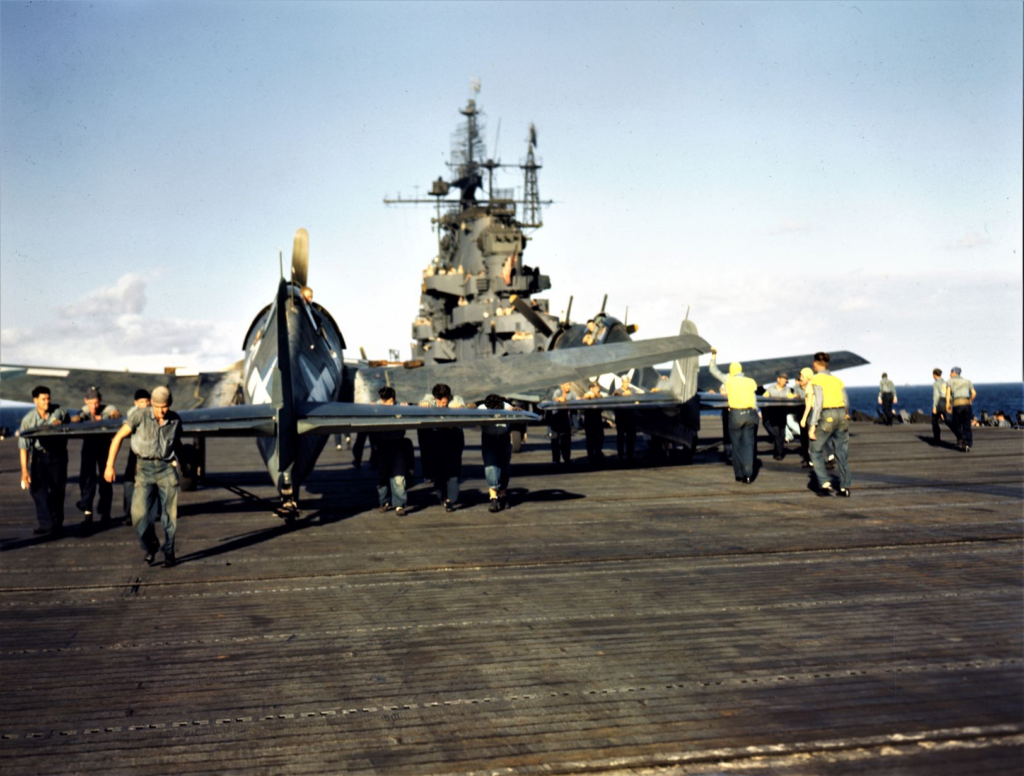


:max_bytes(150000):strip_icc():format(webp)/F6F-3_Hellcats_aboard_USS_Yorktown_CV-10_31_August_1943_80-G-K-14833-bc358b0dd58f42e2a2df6373eeef6d70.jpg)
The YORKTOWN commenced launching the first attack group, commanded by Commander James H. Flatley, at 0422 local time, on 31 August 1943, about two hours and twenty minutes before sunrise. The attack group consisted of 16 F6F, 11 SBDs, and 18 TBFs.
Already a Medal of Honor recipient for actions earlier in the war, Lt. Cmdr. Edward H. O’Hare led VF-6 over Marcus Island



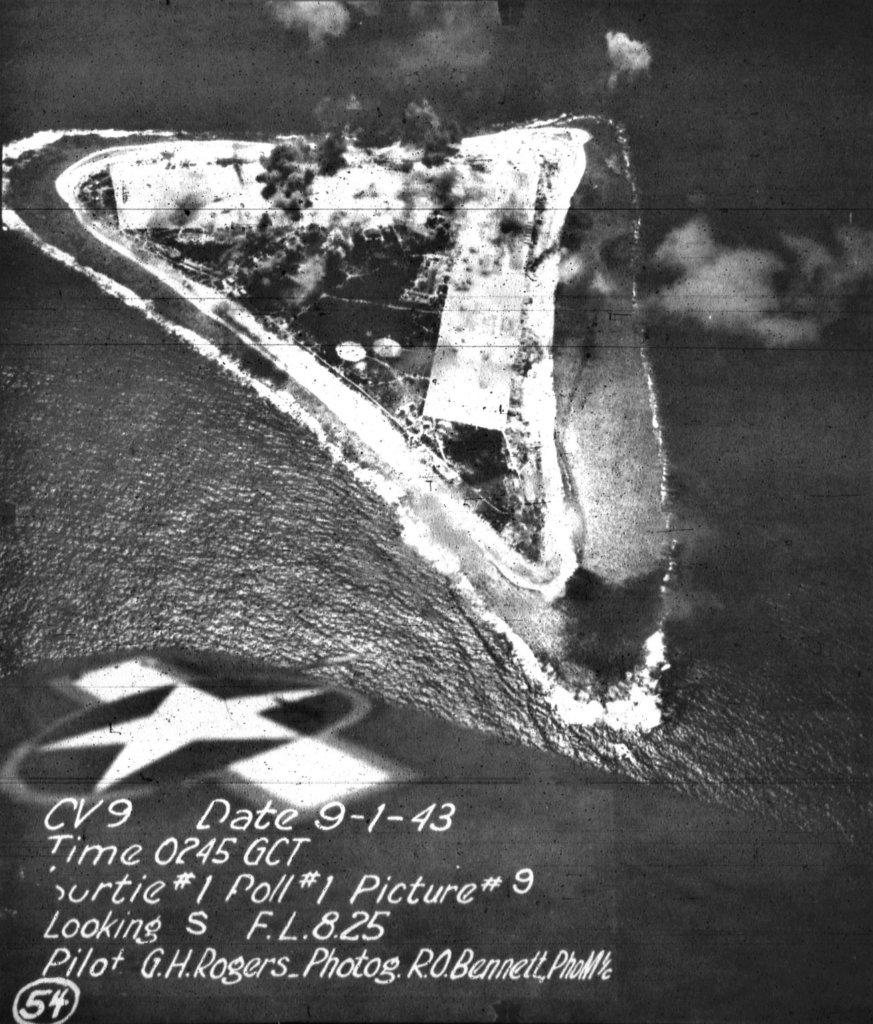


The second and third Mahu Learn strikes were on Tarawa and Wake Atolls respectively on 18-19 September and 29 September into 5 October 1943. By the close of the Wake strikes the aircrews were tired as the photo shows. Thinking this SBD gunner hit by his expression (he wasn’t — just tired) plane handlers rush to lift him from his SBD-5 Dauntless. Following this, Nimitz and Spruance declared an end to “Mahu Learn” and the invasion of the Gilberts 21-23 November 1943.( US NAVAL ACADEMY, Edward J. Steichen Photography Collection)
The attack destroyed over 70 percent of installations on the island.
Aircraft schedule for Wednesday, 1 September 1943
(NOTE: The times are local times, and the day is in ZULU time. Local day would be September 1, 1943. )
============================================================================
VF = Fighters (F6F)
VT = Torpedo Bombers (Avenger)
SBD = Scout/Dive Bombers (Dauntless)
============================================================================









US NAVY GUN CAMERA FILM OF ATTACK ON MARCUS ISLAND (archives.gov)


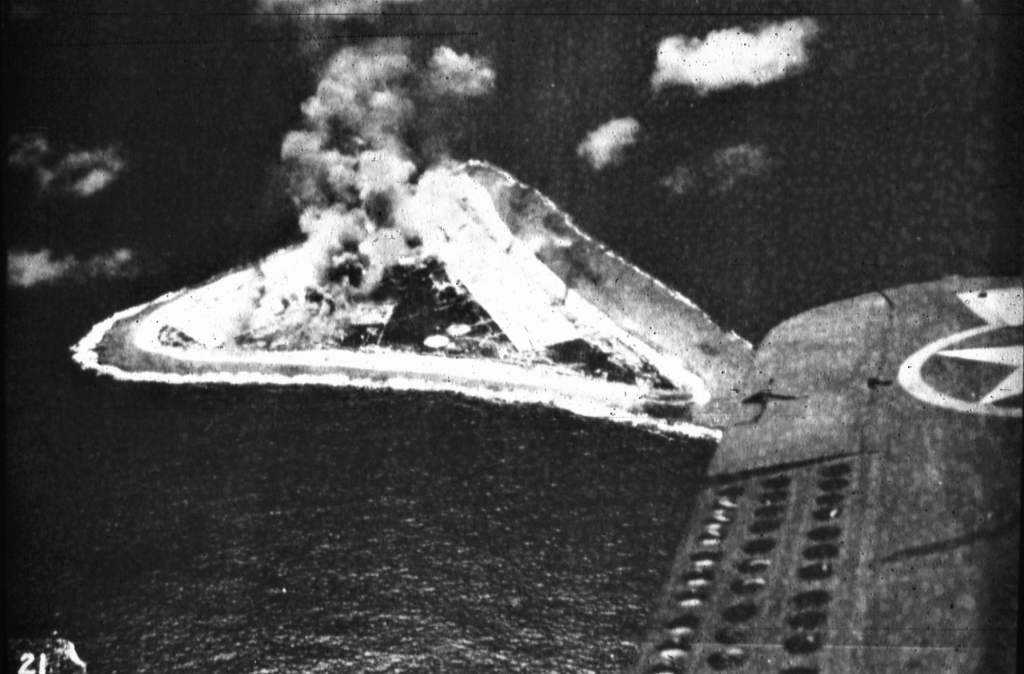




Other reports poured in as dawn came on. Not a single Japanese aircraft had been able to get into the skies. Commander Crommelin had strafed some thirty individual Japs trying to man planes, then, with other fighters, made sixteen runs on seven grounded Betties until all had been set afire. While it was still dark, their seven bright pyres of flame could be seen burning on the ground.
Chronological record of operations for the second US carrier raid on Marcus Island.
= = ========================================================================= Time in left column is GCT (Zulu) time. Time in right column is Local Marcus Island (Kilo) time. At the time, Marcus local time was 12 1/2 hours ahead of GCT (Zulu) time. The operation began (D Day – known as Dog day) on Tuesday, August 31 GCT/Zulu time, but was actually Wednesday, 1 September 1943 for Marcus Local time. ============================================================================



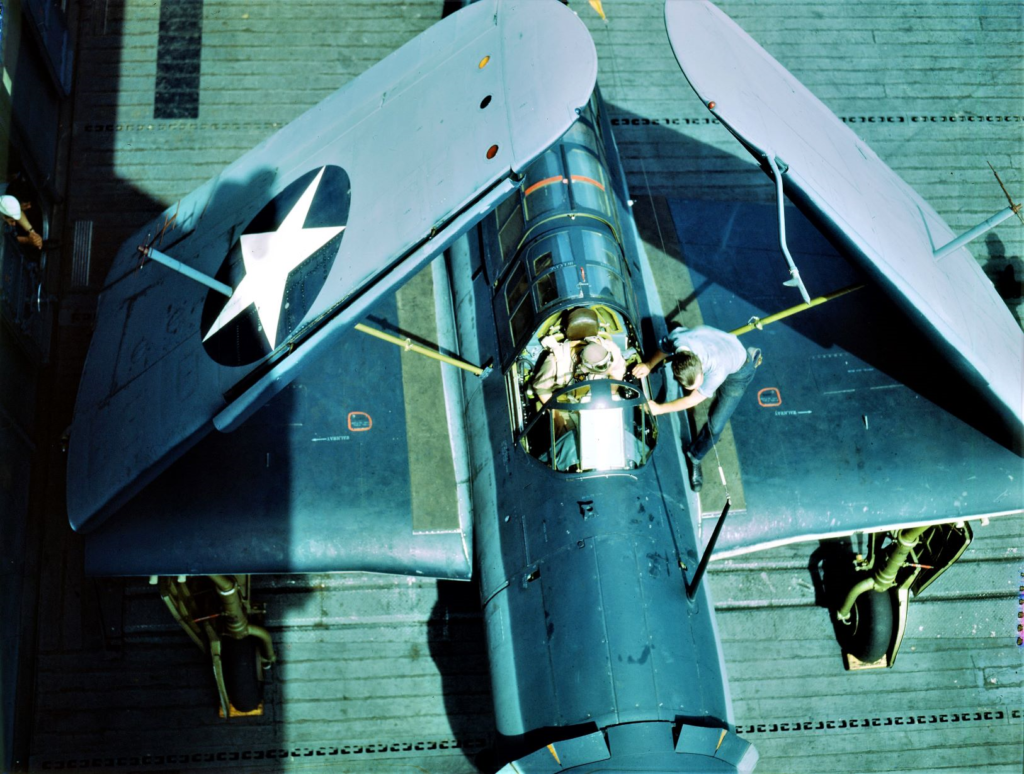

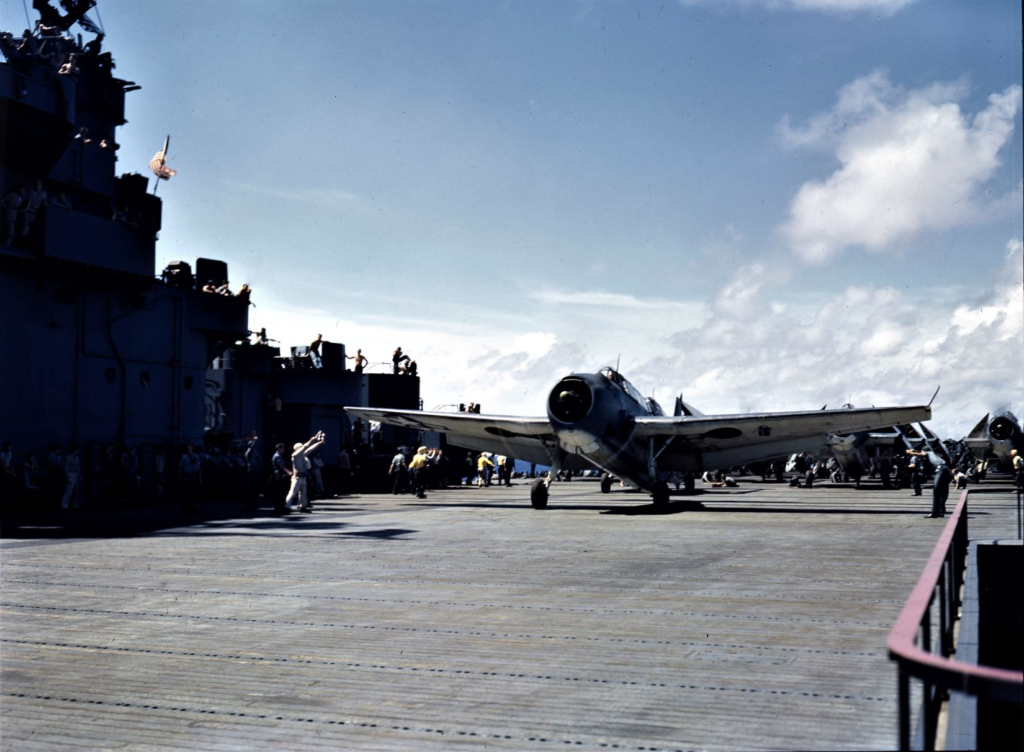



The movie “The Fighting Lady” was released in 1944 by the US Navy. While not naming the carrier it portrayed, it was no secret that it was the USS Yorktown (CV10). In it is footage of the 1943 and 1944 Navy carrier attacks on Marcus Island. Click on the link below to watch the movie.
POST STRIKE DAMAGE ASSESSMENT

- FIVE FUEL DUMPS (Fuel stored in drums) Destroyed
- TOWERS – Possible radar
- FOUR RADIO RANGE MASTS
- GROUND CLEARED FOR CONSTRUCTION OF POSSIBLE SIMILAR EQUIPMENT AS #3
- NEW CLEARING AND EXCAVATION
- SMALL BARRACKS & SUPPLY AREA All except two buildings destroyed
- BUILDING SUPPLIES Destroyed
- ADMINISTRATION BUILDING
- RADIO TOWERS
- PROBABLE WAREHOUSE
- FUEL DRUMS Destroyed
- BARRACKS AREA All buildings destroyed except 3 small ones
- E/W RUNWAY (Length 3975 feet, width 950 feet) Sixteen hits
- LUMBER AND LOOSE STORES Areas A, C, and D hit
- SEVEN MEDIUM “BETTY” BOMBERS All destroyed
- REVETMENT
- PROBABLE SMALL SHOPS AND STORES Area heavily damaged
- HANGAR
- SMALL LIGHTER BASIN AND LANDING BEACH Area hit, damage undetermined
- BLAST PENS FOR FIGHTERS
- SMALL FUEL DUMP
- SHOPS All destroyed except three small building
- CAMOUFLAGED STRUCTURE
- BARRACKS AREA All buildings destroyed
- N/S RUNWAY (Length 4000 feet, Width: 642 feet) Ten hits
- UNIDENTIFIED BUILDING Destroyed
- WAREHOUSE AND UNIDENTIFIED BUILDINGS Damaged
- THREE SMALL RADIO MASTS
- SMALL FUEL DUMP Destroyed
- MISCELLANEOUS SMALL UNIDENTIFIED BUILDING
- POSSIBLE AMMUNITION STORAGE
- DISMANTLED MEDIUM “NELL” BOMBER Destroyed

Aftermath
The commander of the task force, Rear Admiral Charles A. Pownall, was eventually relieved as commander of the fast carrier task force in late 1943 because of a perception that he wasn’t aggressive enough. After the aircraft landed from the Marcus raid, it was determined that two aicraft had gone down. Worried about retaliation from Japanese submarines or planes, Admiral Pownall wanted to retire from the area without searching for the two planes. He was confronted by Captain J.J. “Jocko” Clark, commander of the USS YORKTOWN who is reported to have said “You’ve got the widest yellow streak of any admiral I’ve ever seen in may life,” he told him . “I don’t have any command. You can make me a Seaman Second Classs tomorrow. But this is my ship and those are my boys out there, and I’m going to send out a search for them.” Pownall relented but the search did not find the fliers. A Japanese ship didind them and they spent the rest of the war in a Japanese prison camp.. Three months later, in December 1944, Pownall commanded a carrier raid on Kwajalein. He was judged to be too cautious about conducting a fighter sweep and just before Christmas, 1943, Pownall was relieved of his carrier command. Rear Admiral Marc Mitscher became the new commander of Task Force 58 in January 1944. ( The Reminiscences of Vice Admiral Truman J. Bedding, USN) ( Solo into the Rising Sun” Ed Kittrell pg23 Stackpole Books, 2020)
A Note on dates and time:
There is some confusion as to the date of the raid, 31 August or 1 September? Well, both are correct, it just depends where you are at and what time zone you are using as a reference.
During World War 2, the military used what was called GCT, (Greenwich Civil Time,) to standardize time throughout its units. So no matter what local time zone a unit was located in, if they all used a standard GCT, they would all reference to the same times. (Its important to coordinate things using the same time reference) And Daylight Savings time does not affect or change GCT. It would always stay the same. Also, it was (and still is) known as ZULU time. That’s the time zone Greenwich, England is, on which GCT is based on.
In 1943, the conversion from Marcus Island Local time to GCT was MARCUS LOCAL TIME MINUS 12 1/2 hours EQUALS GCT. So, 0422 (4:22AM) Marcus time on Wednesday, 1 September 1943, would be 1652 (4:52PM) GCT on Tuesday, 31 August 1943.
During World War 2, daylight savings time in the United States was know as “War Time”
But nothing never stays the same. Marcus Island local time now is standardized to other islands in the area and is calculated by adding 10 hours to the GMT. GMT? What happened to GCT? Well, they changed it to Greenwich Mean Time in the US and UK in 1952. But wait, not done yet. They United Nations had to get involved and now call GMT/GCT “Coordinated Universal Time“, abbreviated as UTC. Huh, why not the abbreviation CUT? Because the UN uses French, and that’s how Coordinated Universal Time is abbreviated when speaking French. UTC.
Thus today, to calculate local Marcus Island time from GMT, you would add 10 hours to GMT. (GMT plus (+) 10 hours). Thus 1806 ZULU time on 31 August would convert to 0402 (AM) local (KILO) Marcus local time, the next day.
The International date line separates Hawaii and Marcus Island. Marcus Island is normally 20 hours ahead of Hawaii time. Thus 06:00 am 1 September on Marcus Island would be 11:00 am (1100hrs) 31 August on Hawaii (the day before).
The raid began with takeoff of the first F6Fs from the USS YORKTOWN on Wednesday, 1 September 1943, at 0422 local Marcus Island time (KILO). OR, for the military, it was scheduled on paper to begin at 1652 GCT (ZULU) on Tuesday, 31 August 1943. So you will see two dates for the second carrier attack on Marcus Island, take your pick. But they only attacked one day then got out of there.

REFERENCES
USNA 0321 – Marcus Island Raid; https://usna.contentdm.oclc.org/digital/collection/p16099coll1/id/321/